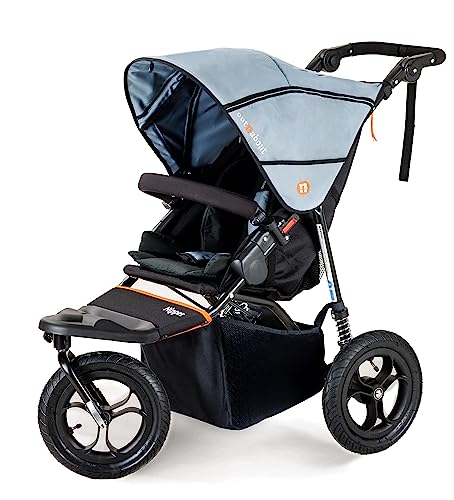How To Save Money On Prams Pushchairs
Understanding Baby Prams and Pushchairs: A Comprehensive Guide
When it pertains to taking care of a newborn or an infant, few items are as important as a dependable baby pram or pushchair. These movement aids provide a safe, comfy way to transfer babies while allowing moms and dads and caregivers the liberty to browse the world. This post checks out the different elements of baby prams and pushchairs, helping moms and dads make informed choices about which item might be best fit for their family's requirements.
What Are Baby Prams and Pushchairs?
Baby Prams: These are typically designed for babies and really young babies. They have totally reclining seats that enable a flat position, making them ideal for newborns. Prams typically include a large, deep body, offering extra protection and comfort.
Pushchairs: Pushchairs, also referred to as strollers, are more versatile and can normally be adjusted for young children also. They are lightweight, easy to navigate, and typically feature a variety of seating positions, consisting of reclined and upright.
Feature
Baby Prams
Pushchairs
Ideal Age
Newborn to around 6 months
Newborn to 3 years or more
Seat Position
Fully reclined
Adjustable (reclined and upright)
Weight
Much heavier, more robust
Lighter, more compact
Folding Mechanism
More intricate folding
Generally easier folding
Maneuverability
Can be less maneuverable
Highly maneuverable
Key Features to Consider
When picking a baby pram or pushchair, prospective buyers should consider a number of essential features that can affect the functionality and comfort for both the kid and the caregiver.
1. Security Features
- Five-point Harness: Ensures the baby is firmly strapped in.
- Brakes: Reliable braking systems prevent mishaps.
- Stability: A wide base and well-constructed frame enhance stability.
2. Convenience
- Padding: Ample padding on the seat guarantees comfort.
- Suspension System: Provides a smoother trip on unequal surfaces.
- Canopy: A big, adjustable canopy secures the baby from sun and rain.
3. Portability
- Weight: Lighter models are much easier to raise and carry.
- Folding Mechanism: Easy folding designs permit quick storage and transport.
- Compact Size: A more compact size makes it easier to fit into cars and truck boots and tight spaces.
4. Flexibility
- Convertible Options: Some designs can be adjusted from a pram to a pushchair.
- Reversible Seat: Allows the baby to deal with the moms and dad or the world, depending on choice.
- Accessories: Look for choices that can accommodate safety seat or have a storage basket.
5. Resilience
- Material Quality: Invest in higher-end materials for longevity.
- Weather condition Resistance: Water-resistant fabrics guarantee that the pram/pushchair can endure numerous weather.
Kinds Of Baby Prams and Pushchairs
Numerous types of baby prams and pushchairs fulfill different function requirements, lining up with moms and dads' particular lifestyles.
1. Travel Systems
Travel systems usually integrate a safety seat and a stroller in one bundle, enabling smooth transportation from cars and truck to pram or pushchair without disrupting the baby.
2. Umbrella Strollers
Umbrella strollers are light-weight and convenient, created for easier maneuverability. They are perfect for quick journeys and may do not have some features discovered in full-size strollers.
3. All-Terrain Pushchairs
These are best for active families who enjoy hiking or taking strolls on rugged surfaces. They usually feature bigger wheels for stability.
4. Jogging Strollers
Jogging strollers are created for parents who want to combine workout with childcare. Prams And Pushchairs include tough frames and fixed front wheels to enhance security throughout a run.
The Importance of Choosing the Right Option
Selecting the appropriate baby pram or pushchair is not merely a matter of choice; it straight affects the security and comfort of the baby. Additionally, the right choice can exceptionally influence the lifestyle of the caretakers.
Advantages:
- Convenience: A well-chosen pram or pushchair makes trips simpler and more satisfying.
- Health: Proper assistance helps in spine and skeletal advancement in babies.
- Bonding: Outdoors play a vital function in parent-child bonding.
Regularly Asked Questions (FAQs)
1. At what age can my baby use a pushchair?
Most pushchairs are designed to accommodate infants as young as 6 months, although some models can be adjusted to safely carry newborns when used with suitable automobile seats.
2. How do I keep my baby pram or pushchair?
Regular cleaning is necessary. Wipe down the frame and fabric with a wet fabric and moderate soap. Occasionally inspect the wheels and brakes for wear and tear.
3. Can I use a baby pram for jogging?
Generally, no. Regular baby prams do not have the stability and style required for jogging. It is much safer to utilize a stroller particularly created for that function.
4. How do I pick the best size?
Think about how often you will be utilizing the pram/pushchair and where. If space is restricted, try to find a more compact design. For outside experiences, opt for one with larger wheels and good suspension.
Baby prams and pushchairs are important tools for moms and dads and caregivers, enabling safe and comfortable transport of infants and young children. By understanding Pushchairs Shop , types, and advantages included, caregivers can choose the best movement aid fit to their requirements. Whether it be an advanced travel system or a basic umbrella stroller, the right purchase can considerably improve the experience of parenthood, making getaways satisfying and hassle-free for both parents and babies alike.
